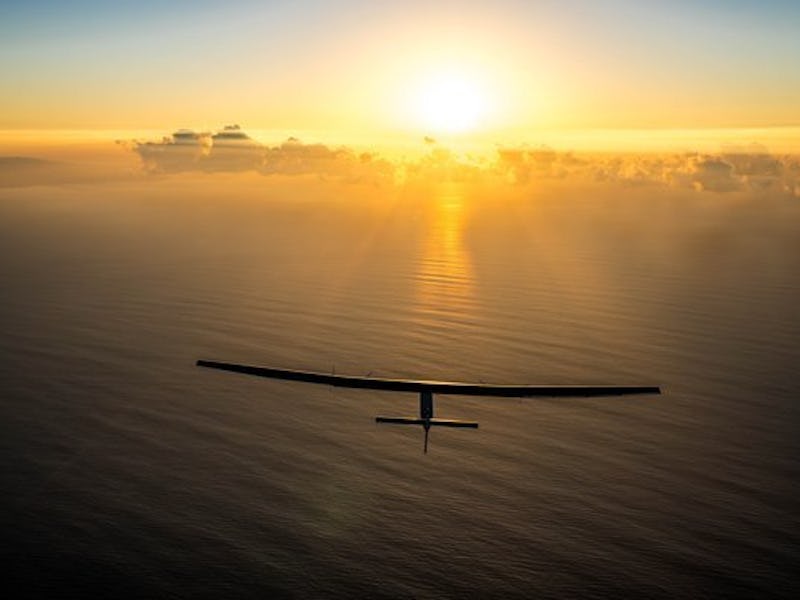Solar Impulse Plane Gets Through First Night of 62-Hour Fuel-Free Pacific Flight
Is the battery half-empty or half-full?

About 1,100 miles off Kalaeloa, Hawaii now, the Solar Impulse plane has successfully flown through the first black, Pacific night of its trip to California. The lonely vista would unsettle the most seasoned aviator, even if their plane did not rely entirely on the power of the sun to fuel their flight. Weighing about the same as your family car and traveling at highway speed, the Solar Impulse is headed to San Fransisco in the second-longest stint of its around-the-world journey that requires no fossil fuels.
The plane flew without incident through its first sunless part of the flight, meaning the first period the plane had to rely entirely on the energy stored in its batteries to stay aloft. The plane traversed just under one-third of the full distance to California during its first day, and now that it’s well through most of its second, the batteries are currently about 90-percent charged, which is good. Solar Impulse will need a good charge to get through night two.
Bertrand Piccard, one of the two founders of Solar Impulse, had been dozing on and off through the night, checking in with mission control and ensuring he has the energy to man the helm for the remaining 40 hours of airtime. It has been almost nine months since Piccard has settled into a night aboard the plane, but its clear from watching the live feed of the flight that mission control’s anxiety will not let up until the sun returns to the sky.
Early in the morning on Earth Day, the Solar Impulse plane was trudging along at 24 KTS, equivalent to just about 30 mph. The 62-hour flight is not even close to the speed of a modern jetliner, but then again the plane is pushing a different set of objectives. The solar-powered plane is trying to show the entire planet that we can fly around the world without using fossil fuels. The ambitious founders of Solar Impulse hope the stunt can draw attention to climate change and national efforts to reduce carbon emissions like the Paris Climate agreement.
The problems encountered in the flight from Japan to Hawaii clearly underscore the dangers of testing such a young technology on such a grand scale. While the plane reached its destination, the extensive damage to the engine certainly frightened the team that didn’t realize how close to tragedy they had come. Yet Piccard is far from the first to place his life in the service of science and discovery, and he should be fine, as long as he can make it to the next morning.